For obvious reasons, my home theater has primarily focused on Blu-ray and Ultra HD content, plus cable TV and streaming at a minimum of high definition quality. Even so, I still like to keep older formats around. Recently, I dusted off my old Laserdisc player and hooked it up again.
Laserdisc was the format that first got me into home theater. When I went to college back in the 1990s, VHS was still the standard for watching movies at home. I encountered my first LD player at my work-study job and never looked back. The picture quality on a Laserdisc was significantly better than VHS, and most movies were letterboxed to their original theatrical aspect ratios. Even better, many discs offered cool features like audio commentaries and behind-the-scenes documentaries that were incredibly fascinating and novel innovations a film student like me ate up and couldn’t get enough of.
After college, the purchase of my own first LD player naturally resulted in a need for better equipment to watch the discs on. I bought a bigger TV and my first surround sound system, and my interest in the home theater hobby escalated rapidly.
I was deeply devoted to Laserdisc and resisted the transition to DVD at first. (To be fair, early DVD releases were pretty crappy.) Eventually, of course, the world moved on and so did I. Studios stopped releasing movies on LD and manufacturers stopped making the players. Fortunately, the quality of the DVD format got a lot better too. My first professional writing gig was for the now-defunct DVDFile web site, and by the time I started there, Laserdisc was already well in the rearview mirror. Nevertheless, I kept my player around and continued to collect discs I found interesting. In fact, to ensure that I got the most out of the format, I invested in one of the best Laserdisc players ever made, the Pioneer HLD-X9, a 38-pound beast I imported from Japan for a pretty penny.
The size of the thing and its shiny gold finish made for a very impressive piece of hardware on an equipment rack, and still do.
As an analog video format, Laserdisc picture quality could vary wildly with the player used. Entry-level models tended to deliver very soft, noisy images. The more money you spent on a player, the better results you could get. The X9 was notably superior to any LD player released in the United States, and I’ve cherished owning it ever since I bought it.
Sadly, over time, my interest in watching Laserdiscs declined. Once we moved to Blu-ray – much less 4k Ultra HD! – the thought of watching analog standard definition again seemed almost unbearable. Added to that, most of the content I ever owned on LD eventually made its way to digital formats. Even once-exclusive rarities I paid a lot of money to buy on Laserdisc can now easily be found in higher quality on smaller discs or streaming. My beloved HLD-X9 sat unused for a number of years. Although I kept it sitting in my equipment rack, mostly for its impressive visual presentation, the player wasn’t even connected to anything for a very long time.
Getting It Running Again
I’d entertained the thought of connecting the player again from time to time, but it always seemed like such a big project. Laserdisc is simply not a convenient format in any respect, and that includes setting it up. Once I finally made the decision to do it, I had to set aside a good chunk of time.
The biggest issue is the morass of cabling requirements. Nowadays, you can quickly plug in a Blu-ray or UHD player with a power cable and one HDMI cable and be all set to go. Not so with Laserdisc. To take advantage of the format to its fullest, you need:
- 1 video cable (Composite Video preferred)
- 1 Toslink or digital coax cable for PCM and DTS soundtracks
- 1 set of analog audio cables for commentaries and pre-digital discs
- 1 digital coax cable from the AC-3 RF output for Dolby Digital 5.1
That AC-3 output has to be plugged into a separate RF demodulator device to extract the Dolby Digital and convert it to a standard form an A/V receiver can decode. The Kenwood demodulator I have makes things marginally more convenient by allowing me to plug both the AC-3 and standard digital outputs into it, where it will auto-switch between them and only take up one input on the receiver.
Further, because the player I have is a Japanese model designed for 100 V electricity (as opposed to 120 V in the U.S.A.), the power cable needs to go into a voltage converter.
For all of the glitchiness and problems that it may suffer, HDMI has greatly simplified home theater in many respects.
It may seem counter-intuitive to use a Composite Video cable when the HLD-X9 also has an S-Video output. Wasn’t S-Video supposed to be the superior connection method? Not exactly. Laserdisc video is actually encoded on disc in Composite format. When using the player’s S-Video output, you rely on the comb filter inside the player to separate the color from the black & white parts of the signal. Unfortunately, even though the X9 had one of the best comb filters available in the mid-1990s, it does not play well with modern digital displays. The S-Video output results in serious “checkerboard” artifacts where areas of solid color will pixelate into large squares during motion. It’s virtually unwatchable now, especially when viewed on a projector. Meanwhile, the Composite Video output is unaffected by this.
The question is moot given that virtually no home theater equipment offers S-Video inputs anymore anyway!
From the player, all those cables have to go somewhere. I’m certainly not going to run a long Composite cable all the way to my projector (which doesn’t even have any analog inputs). The most logical move is to send everything to an A/V receiver, but even that’s not particularly convenient for me. I have so much home theater gear that it fills two equipment racks, and running four cables from the LD player and RF demodulator on one rack to the receiver on the other is a big mess.
Until recently, a Lumagen Radiance XS video processor had been the central hub for my home theater through which all of my various video sources were routed, scaled, and switched. Unfortunately, the XS model cannot do 4k. I had to bypass it and pull it out of my system when I upgraded my projector a few months ago. Thankfully, Laserdisc actually gives me a use for it again. I’ve moved that processor over to the same rack as the LD player and connected all of the X9’s various cables to it. The Radiance will digitize and consolidate the video and audio into a single HDMI output that’s much easier to run over to the receiver. It also does a pretty good job of scaling the standard-def video to 1080p, which allows the projector a slightly easier task of only needing to upconvert from there to 4k.
Spinning Out
With all that accomplished, I put in my first Laserdisc (Dune, naturally) to test the player and my heart sank. The machine simply ejected the disc without playing. I tried a few times to the same result.
I switched to GoldenEye (another CLV format disc) and tried again. Although that one loaded, playback was extremely glitchy. The video froze repeatedly while audio continued playing. The player wasn’t responsive to any commands from the remote (and yes, I did put in fresh batteries). Only the front panel buttons did anything.
I was all set to shoot off an email to a friend of mine who works on LD players to see if it was worth trying to repair. Fortunately, I took a breath and tried one more disc. Toy Story (CAV format) played fine with no problems at all. I popped in another CAV disc (Dick Tracy) and that worked as well.
Thinking that perhaps the player would now only read CAV discs, I tried another in CLV format just to be sure. When Tomorrow Never Dies worked without issue, I went back to GoldenEye and it starting playing properly this time. I even got Dune to play.
My theory at the moment is that the player just needed time to warm up after such a long stretch of disuse. That’s what I’m telling myself, anyway. It has continued to be a little finicky with further attempts. Even though Dick Tracy worked on one day, it took me six tries to get it to load when I tested the same movie again a few days later. It did finally start playing, fortunately.
The next issue I encountered is that any content I play with a 4:3 aspect ratio displays static and other crap from the Vertical Blanking Interval at the top of the screen. Back in the day, stuff like this would be hidden by the screen overscan inherent to any CRT tube television, but it’s all fully visible on a screen with zero overscan.
Luckily, the Radiance saved the day here as well. That processor has video controls that allow me to zoom in a step and slide the image up enough to eliminate the garbage without losing real picture content. For those who don’t happen to have such an esoteric piece of equipment, many HDTVs have an “overscan” setting that will zoom the picture up a little when you run into problems like this. You’ll probably lose a little image from the bottom of the screen, but it’s better than seeing all this unwanted junk you were never meant to see. Any widescreen movie that’s letterboxed on disc is meant to be zoomed up anyway, which will take care of the issue on its own.
Is It Worth It?
If all of that seems like a lot of work to play some 20+ year-old Laserdiscs, I wish I could state with some enthusiasm that the effort was rewarded. I have to be honest, however, that even with one of the best Laserdisc players ever made, the LD picture is very soft and flat and noisy, with dull and muddy colors. I don’t think any of that’s a player issue. We’ve just come a long way since Laserdisc. Once you’ve started getting used to 4k HDR, analog standard definition is kind of an eyesore. I might be able to tweak and better calibrate the picture by playing with the settings in my video processor, which will probably help a little, but I will need to temper my expectations for what might be possible there.
I still have a very strong sentimental attachment to my Laserdisc collection, and for that reason I’m very glad that I got the LD player working again. I even still have a small amount of content on LD that never made the transition to digital media. It’s nice to have access to that again. Realistically, though, the primary value of this experiment was pure nostalgia. As much as it saddens me, I can’t honestly say there’s much practical use for good ol’ LD anymore.

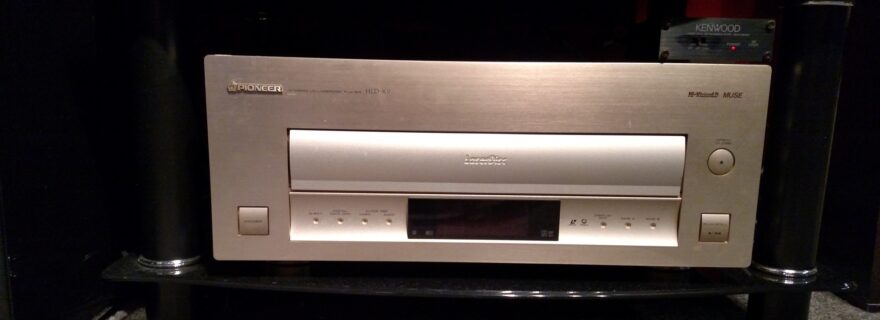
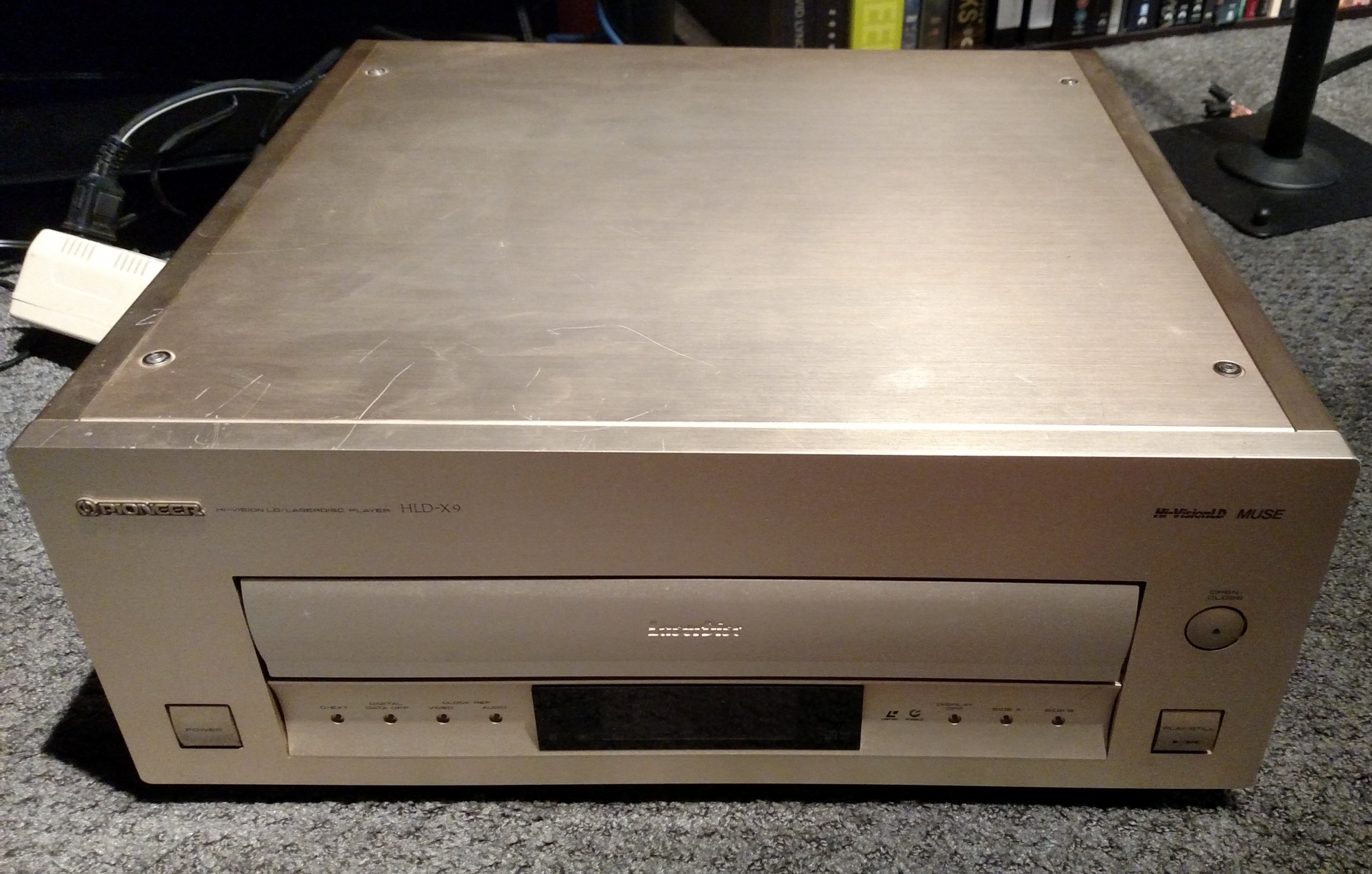
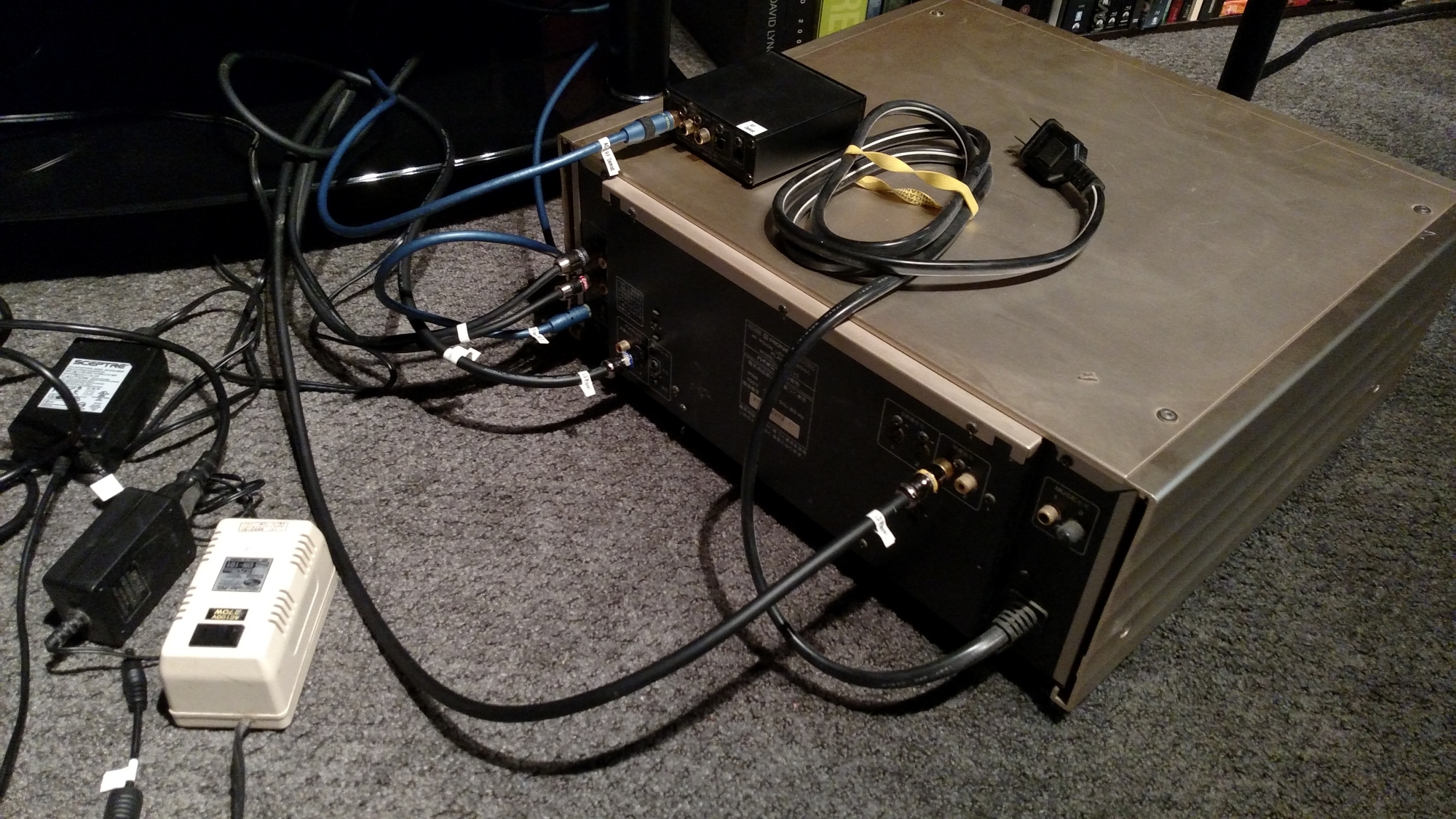
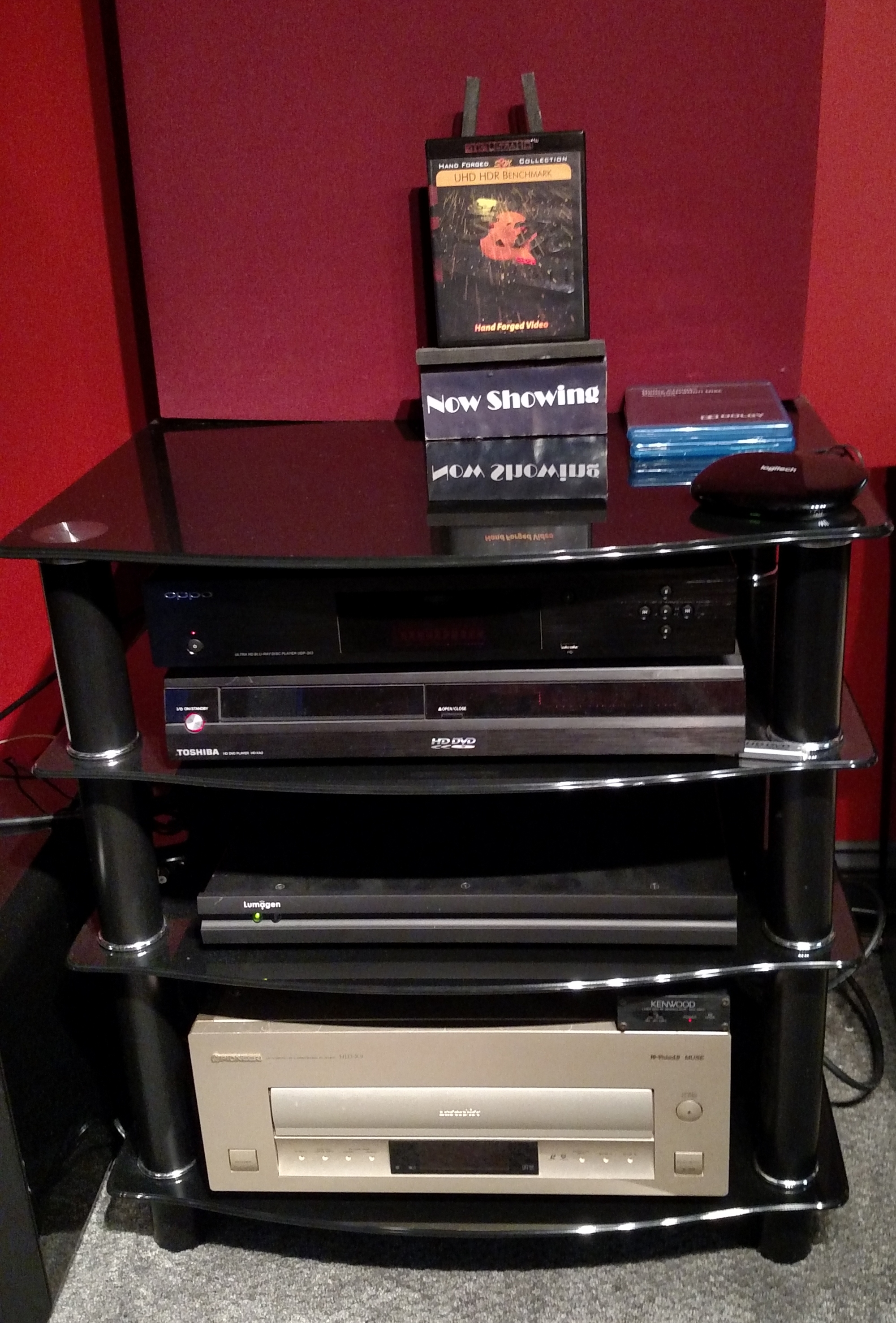
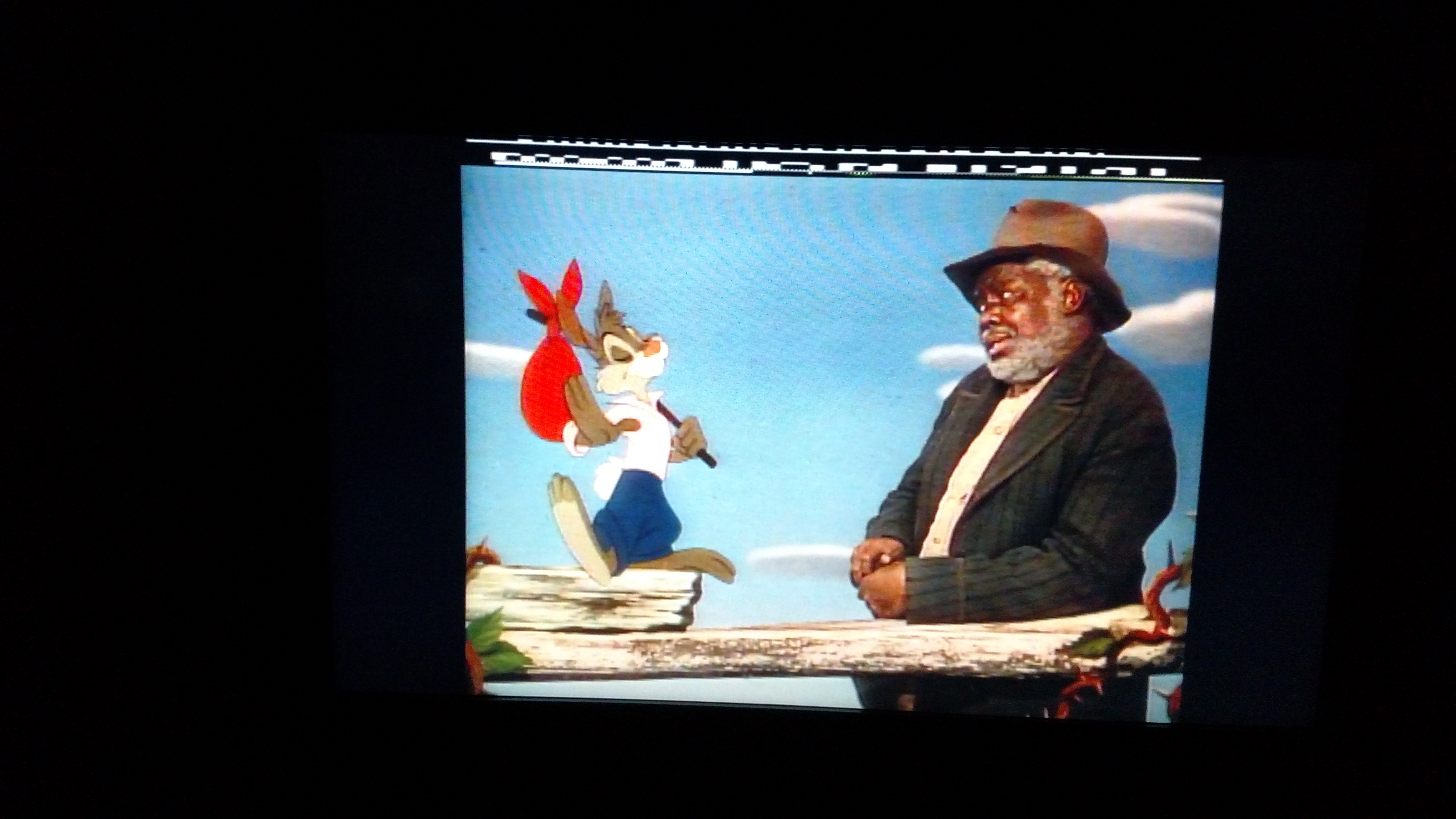

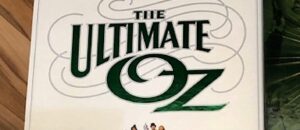
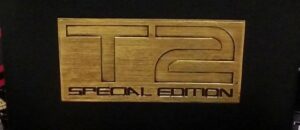
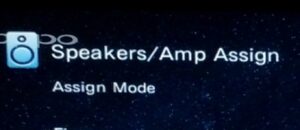
Luke Hickman
You have the Song of the South LD?! I thought Disney ret-conned all versions of it from existence!
Josh Zyber
AuthorReleased in Japan, with large Japanese subtitles on screen during all of the songs. I chose that for my photo because it’s one of the very few Laserdisc exclusives left.
Delia Binder
I thought that about Song of the South myself! When my younger brother asked for a VHS copy, I had to order one from France (in English, but w/a French subtitle track) and dub it from PAL to NTSC using a multi-region VCR I just happened to have on hand. I confess, I never thought about buying a copy from Japan….
Babak
LD is still the only way you can watch the original Star Wars trilogy before Lucas added all the BS.
Unless you downloaded the ones available on Torrent of course
Josh Zyber
AuthorThe Star Wars Laserdisc transfers were available on DVD for a time, as a “bonus feature” on a set of the Special Edition versions. Sadly, those discs are long out of print. Then again, so are the Laserdiscs.
Dave M.
And the big issue with those if I remember was that they didn’t do an anamorphic transfer, so they looked terrible on a modern flat panel TV. They were like 320p or something.
Josh Zyber
AuthorAlmost all Laserdiscs, including the Star Wars trilogy, are non-anamophic as well. Only a very small handful of discs (called “Squeeze LDs”) employed anamorphic enhancement on Laserdisc. I have two of them: Terminator 2 and Showgirls.
photogdave
There were letter-boxed VHS editions. I wish I had kept mine!
Shannon Nutt
The DVD versions Josh mentioned are letterboxed, but non anamorphic. You have to use your zoom to view them non-window boxed.
Chris B
Do you own an LD copy of End of Days Josh? It was the last title ever distributed by a major studio for the format apparently. Fittingly enough given the title. It was always my holy grail item back when I used to collect.
Julian
There were a few releases after ‘End of Days’. The last American pressings were ‘Bringing Out the Dead’ and ‘Sleepy Hollow’. In Japan, ‘The 6th Day’ (another Arnold movie), ‘Titan A.E.’ and ‘M:I-2’ were released as well. The final major movie was ‘The Cell’ (SUPER RARE), and the very last releases were ‘Tokyo Raiders’ and a repressing of ‘Dragon’s Lair’ for arcades (the only pressing in 2002).
Josh Zyber
AuthorMany jokes were made at the time about Bringing Out the Dead being an appropriate title for the final (American) release on the format. I don’t have that disc, but I do have Sleepy Hollow, as well as the Japanese releases of The 6th Day, M:I-2, and The Cell.
My sentimental attachment to owning the “last” releases on the format is waning, and I will probably sell all of these if I can get a good price for them. I only need to keep movies (or discs) that I actually care about.
John
Still have my sealed copies of Sleepy Hollow and Bringing Out The Dead. I still pick up discs every now and then. Every time I try to get out another pulls me back in. lol
James
I have all the ‘last’ releases….of course my pride and joy is the 2001 Japanese release of The Cell.
MrTapWater
Great read. Would love to see you compare MUSE LD discs with their Blu-ray/HD-DVD counterparts.
Julian
Coincidentally, I just bought my first MUSE disc and decoder last month (‘Back to the Future’, naturally), but I have yet to configure and hook-up the decoder (not sure which cables I need). Working on it (and very curious to compare to Blu). I read some reports online that a lot of HLD-X9/X0 players display a P5-error when trying to load a MUSE disc, but luckily, my player at least could read and spin the disc when I tried it. A lovely ‘HD’ logo lighted up to indicate a MUSE disc was inserted.
MrTapWater
You should check out the Facebook group “Laserdisc Forever”, there’s some folks there who would be able to help you out.
Julian
I was a member for quite a few years, but the constant sales were too tempting for my wallet, so I quit 😉
Josh Zyber
AuthorI do not have a MUSE decoder or any discs. My understanding is that the format only actually approached 1080i resolution for static images. As soon as any motion enters the picture, the resolution effectively halves and is barely better than standard LD. That’s a serious problem for a format that contains movies.
MrTapWater
Techmoan has a good in-motion comparison between the two LD formats in this video. I think you’ll find that MUSE is significantly better than standard LD. https://www.youtube.com/watch?v=hUQvnxxTuM4
photogdave
Sometimes it’s worth it to keep old playing equipment around to access media that is no longer obtainable.
I keep a VCR so I can watch some out of print movies and I have a few cassette singles of songs you can’t buy in ANY format so I have a tape deck around.
I was discussing this with the owner of the video store (yes, still running) in my old neighborhood. He surprised me by saying he prefers to watch everything on VHS because he’s pretty much forced to focus all his attention on the story and not be distracted by things like photography and sound mixing.
Interesting point of view but I don’t think I’ll go that far…
Slayer117x
I’ve found that modern equipment upscales better than older equipment. Sometime you should try skipping the Lumagen Radiance. I’m not sure if the difference is worth it, but I would expect a better picture.
Cary Stegall
No reason not to run LD if it makes you happy. I have plenty of discs to sell you!
Charles Contreras
At least you had better luck than I did, I owned 2 Pioneer laserdisc/dvd players, DVL909 & DVL919. The 909 totally stopped working, and the 919 would only play the first few minutes of a clv disc before it would stop. But they were great while they lasted, and it’s your article that, to me, keeps the memory of this format alive.
Julien
Glad to see DUNE is still spinning on your X9 🙂
What you experienced with a X9 that didn’t get used for a while might be the rubber belts that got stiff and took some time to soften. My 9 didn’t like being in a storage for a year and would through clamping errors and give up. It got better after a few power cycles and open/close.
For 4K replay, I went the Lumagen Radiance 2144 way and it’s quite amazing.
Also good to insert a MUSE Decoder to RGB 1080i for Hi-Vision replay.
Dedicated topic on LDDb Forum here: https://forum.lddb.com/viewforum.php?f=51
Also good at splitting video and audio (analog gets sampled at 96KHz) so that the video goes scaled/processed by the Radiance and the Audio gets sent to my OPPO UDP-205’s DACs (separate stereo and 5.1 decoding) for better conversion than what my aging A/V Amp could do.
I skipped DVD, mostly skipped BD (except for music).
Basically I went straight from LD to 4K BD.
Dave M.
Great article! I miss the Laserdisc days sometimes, but more for the nostalgia than the actual picture quality. Your LD player is awesome. As LD was going by the wayside I was looking at one of those combo players that had component video outputs-until I found out that it didn’t output the LD signal via component, only S-video. It was essentially two separate machines in one chassis. Thanks for the trip down memory lane though!
Josh Zyber
AuthorSadly, those combi players wound up being mediocre at both LD and DVD playback. IIRC, the LD section was based on a “lower middle range” Pioneer CLD-D406. They were devices for convenience, not performance.
Bob DeCarli
Nice article. I was a fan of your old laserdisc website, and consulted it frequently over the years. I still have my CLD-97 connected to my system and watch a movie on laserdisc roughly once a month.
Bill Boggess
LD was doomed to fail; a transitional format that – while superior to VHS – was still cumbersome and rightfully never caught on in the mainstream.
Still, this was an interesting article and a reminder of a format that is often forgotten by most people.
Julian
Was it really transitional? Its run almost equalled that of VHS, so you could say VHS and LD were contemporary side-by-side formats (1978-2002 for LD, 1976-2006 for (commercial) VHS). I’d say the public chose price and recording capabilities of VHS over PQ/AQ of LaserDisc.
I could be mistaken.
Bob DeCarli
I agree, and I think it’s important to note that LD prices were comparable, if not cheaper, than VHS prices during the early part of that period. If I recall (I was a kid), VHS titles could go for close to $100. They were not meant to be purchased by consumers, just by stores to be rented, with a royalty going to the distributor.
Julian
You’re right! VHS tapes were very expensive in the beginning. I remember seeing an old photo online of a store selling tapes, proudly proclaiming a 50% discount with ‘now tapes are only $49.99 per piece!!’. Haha.
‘Batman’ was the first $19.99 tape, and sold millions.
Barsoom Bob
True that. I paid $60 or $80 for my first VHS copy of Dune.
Jesse Skeen
Laserdiscs have much more of a place in today’s home theater than cable TV, or Netflix’s current movie-ending-ruining interface.
Bryan
Laserdisc on a CRT with S-Video is like watching HD content. Beautiful.
Nick R-W
I am finally close to finishing my first dedicated home cinema room, and have been working out which pieces of equipment to put in it. With a lot of rack-space available, I am thinking “sod it” and putting my Pioneer LD player in there, partly out of sentiment, partially to cover all bases, but also because there are some discs I really don’t want to pay out for again (the quality of the PAL Repossessed disc is fine, thank you…)
I have a Kenwood RF Demodulator which takes care of AC-3 matters, but the problem is that SCART leads (the main type of connection on the player) is going the way of the dodo and books these days, and I have to fork out for a SCART-HDMI converter, but it’s nothing more than money. Again.
I have a reasonable collection of LDs, with some rather obscure and very old (the original rental disc of Star Wars from 1982) along with a few collectibles. I bought the Japanese LD of Star Wars Episode 1 when it came out, and as I paid so much for it, I’m not getting rid of it in a hurry, and the absolutely corking AC-3 audio makes it my go-to copy. Not to mention that it’s the best edition of the theatrical version out there.
It wasn’t that long ago I had a fully-operational Betamax video recorder, so it gives you an idea of the condition I keep these things in, so why not have them up & running when possible?
Julian
Lovely! I wish I had a fully-operational Betamax video recorder. And isn’t it funny how PAL tapes were always superior to NTSC, but PAL LaserDiscs were woefully inept compared to their NTSC brethren? (A few exceptions, like the CAV ‘Jumanji’ or the British Pioneer pressing of ‘BTTF’ nonewithstanding).
Nick R-W
I still have the UK edition of BTTF! There was always a sheer of “interference” on the image of PAL discs which – at the time – I referred to as “PAL Sh*t”, and it spoiled the picture on it. Add to that how PAL discs couldn’t do AC-3 soundtracks, so importing became vital.
As for Beta, yep – it was indeed superior to VHS, but we all know how that one ended up. I still have rental copies of things like Suspiria, Halloween 2, My Bloody Valentine, Class of 1984, Carry On Cleo (!) and others, which are probably worthless, but nice as ornaments! You have to spare a thought for poor old Philips V2000. It cleaned the floor with VHS, with the innovation of double-sided tapes AND it introduced the world to SCART sockets, but it still couldn’t break the stranglehold the other formats had on the market!
Glenn Sturdy
Got my LD player hooked up again recently. The main reason is the extras have often never been ported over. This is especially true of Disney CAV box sets – The Lion King for example. Actually CAV animation in general. I may be wrong but I don’t think most blu ray players have a step button allowing you to see each individual frame, and for animation this is a must – see Bambi April Showers sequence for example. Anime too. Perhaps the best extra I have on LD is my Wings of Honneamise/Royal Space Force, a CAV boxset which included a disc of extras including production drawings which were screened as the full soundtrack, by Ryuichi Sakamoto played. It’s gorgeous. Second up is Akira CAV boxset which included a section at the end of EACH side featuring production drawings. Also at the top of the list are the Patlabor movies box and Evangelion box and the aforementioned Disney CAV’s. Criterion too obviously though most, though not all- where’s Woo’s The Killer?, have been ported over to at least DVD. But for me animation and CAV LD still struggle to be beaten.
Dave M.
Yes! I remember the CAV Lion King. Was that one AC-3? Because I remember the sound on that one being amazing! I still swear that my Akira LD-mastered fresh-looked better than the DVD for sure.
Joe madajewski
XFR the irreplacable before laser rot kills em
Then its too late
Josh Zyber
AuthorI’ve discovered that both the Laserdisc player and the RF demodulator are putting out a fair amount of heat even when in Standby for seemingly no reason. I’ve had to unplug both of them when not in use.
Dave M
You know what’s funny: I swear that the Raiders of the Lost Ark LD still looks better than the DVD and blu-ray. Now, of course, that’s not actually true. Its just my memory being malleable. But I remember how great that disc looked, and when the DVD box set was released I was very disappointed.
James
I used to have my Laserdisc player hooked up to a pair of kick ass PSB speakers and an old Marantz Pre-amp. I swear that my Laserdisc of Talking Heads Stop Making Sense sounded better than my Blu-ray copy playing on my modern setup.
Julius p
Well being sad to say LD machine ‘s are still a format of art still costing even if players are broken or working..Long live the past.
Ffg
All of those things you’re describing the LD picture as is called “warmth” and it’s the way people describe vinyl as if it is an unmistakeably positive quality
Kevin McCabe
Do you have any interactive laser discs? Widely used by North American auto manufacturers, these discs in both CLV and CAV formats have actual computer programs on them. The earliest of these from around 1979-1982 have serious decay problems. Sony and Pioneer both manufactured these discs which each only fully worked on their own proprietary player. My question is simply, can these discs be copied to digital and be able to retain the computer program?
Peter E.
I still use laserdisc in my classroom – going on 30 years now. Still using the same Pioneer LD-v2200, now plugged into a switch that goes to a sound system and a projector. There are simply not any replacements for some of the titles or that give me the ability to play a small section, then skip to somewhere else and play another spot or run a section frame by frame (step by step). The educational titles by Optical Data ( and a few others) were well done and still useful. I have both the brick remote and a barcode scanner remote. It is too cumbersome to do the same thing with a DVD or with online video. The disc players or computer software players that could be used are either hard to get what I want or just can’t do it the same way. The old laserdisc player and brick remote do exactly what i want with very little time spent figuring it out and executing it on the spot in class while giving the lesson. The students get a big kick out of seeing me take a disc out of the jacket and pick up this big dog remote. Someday I may have to give it up, but perhaps not until I retire.
Joe madajewski
Get em transferred to a viable 2020 format before laser rot kills the disc into eternity
Thats part of my philosophy with the discs i own now.
Rare kinda and important to ME
Joe madajewski
I need a ‘new’ ld and will ecperiment with ab s and video out to hdmi converter
It is my dream to capture a few discs/clips i cherish. Dennis deyoung japanese pressing
The cars heartbeat city. Both ld and on demand warner pressing
And buying the TOPAZ AI software and a new high end pc to ‘upconvery’ these treasures to as high wual3ity as my budgt
Allows
EM
I am amused that this post about a defunct format remains so active on this defunct site.
rastakins
I found that the DD and DTS 5.1 soundtracks on LD tend to have better .1 channels. The .1 channel on LD often only contains the explosions, helicopters, jets. and gunfire. It is suitable for a seat shaker. Sadly, many, many DVDs have the music bass carelessly mixed in with the .1.
James
Liked your article.
I still occasionally break out my X9 to spin up and watch a disc from my LD collection.
Never underestimate the power of nostalgia.
Steven A Mariash
I just ran across this article on my news feed today (12/09/2020). You folks may not realize it, but the Sony MDP series players with the jog and shuttle knob will treat your CLV discs as if they were CAV discs. I used to illustrate this with “The Song Remains The Same” concert laserdisc when I worked at Highland Superstore back between 1987-1990.
I was the proud owner of both a Luxman and the Pioneer CLD 900 players when I lived in California from 1998-2006. They were both essentially the same units, which would both respond to the same Pioneer remote. Though the Luxman was stuck in CD mode, and the Pioneer was stuck in laserdisc mode, I utilized each one for their purpose. The Luxman unit made it one of the finest sounding cd players I ever owned, though you could not program play with it.
They were the first iteration of the multidisc player which was introduced in 1986 at an msrp of $1200.00. they weighed 34.9 lbs. apiece.
I now own a Pioneer Both Sides Play unit and a Sony MDP650. I have a small collection of laserdiscs including some episodes of X-Files tv series that I haven’t even unwrapped yet.
Delia Binder
Was there never a Laserdisc player with Component Out? I still have one or two VHS VCRs with that.
I remember when I loaned my best friend a Composite-only LD player, which on her Sony Trinitron looked great compared to VHS. Then she bought a more expensive model with S-Video out, and after I hooked it up for her the difference was breathtaking even compared to composite LD players. Of course, once Component Video became a regular thing on DVD players and televisions, that was another quantum leap in quality.
Josh Z
The LD/DVD combi players near the format’s end technically had Component outputs, but they were only used for DVD playback. You would get a black-and-white picture if you tried to watch an LD using that connection.
Laserdisc video was encoded on disc in Composite format. In order to display a color picture, that has to be run through a comb filter. If using a Composite RCA output, you rely on the comb filter in the TV or display. If using S-Video, you rely on the comb filter in the LD player itself. Given that the last LD player was designed in the 1990s, it goes without saying that their comb filters are quite dated. You can typically get better results using a Composite RCA cable and feeding it into the comb filter in a modern television.
Julian De Backer
I recently tried to play my first MUSE disc. I connected a few cables on my decoder, but all I got was black and white instead of color. Must have done something wrong, haha.
Rick Csargo
Have you tried connecting it to a HDTV analog CRT display?
Digital displays aren’t built for showing LaserDisc.
Dean Keaton
Well it looks like Laserdisc has had a small resurgence with collectors -possibly due the new normal times. The top US models have all sold for top dollar if I’m excellent shape. I’ve also noticed certain tiles selling for top dollar, even in the $400 range.